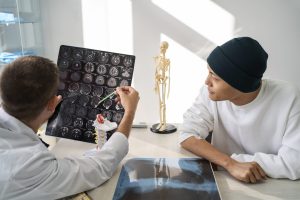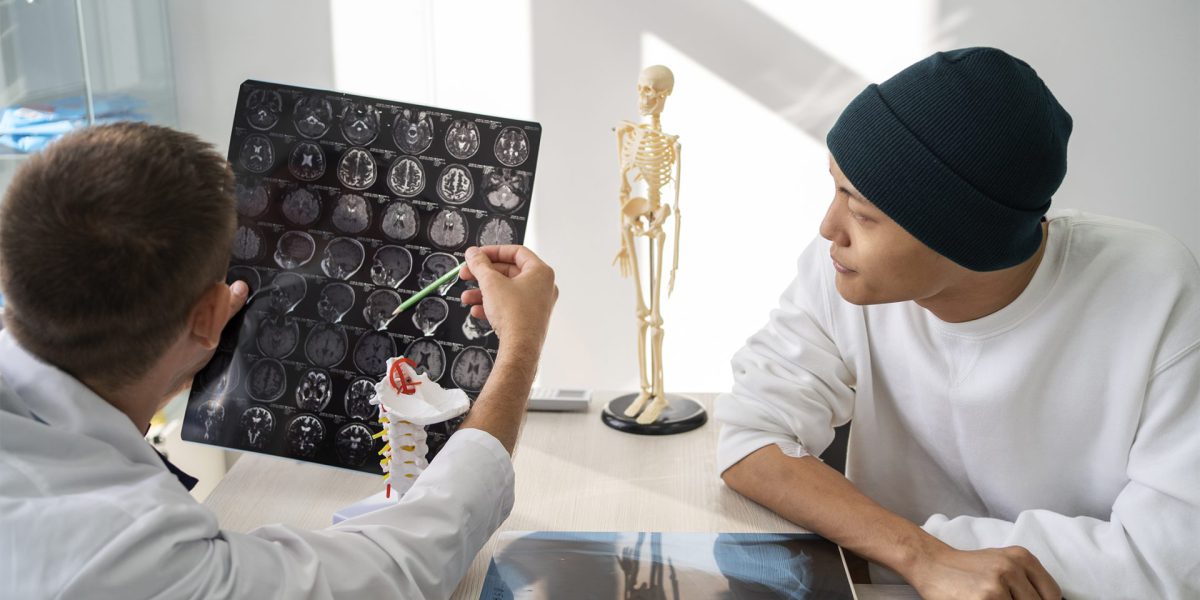Introduction
Radiology is a branch of medicine that utilizes medical imaging techniques to diagnose and treat diseases. It plays a crucial role in modern healthcare, allowing healthcare professionals to visualize the internal structures of the body without invasive procedures. In this article, we will delve deep into the world of radiology and explore the various modalities and advancements in medical imaging technology. So, fasten your seatbelts as we embark on a journey to uncover the mysteries of radiology!
Radiology Revealed: Exploring the Depths of Medical Imaging
Radiology Revealed: Exploring the Depths of Medical Imaging is a captivating topic that unravels the fascinating realm of medical imaging. By harnessing advanced technology, radiologists can peer inside the human body, providing invaluable insights for diagnosis, treatment planning, and monitoring of diseases. Let’s dive into the depths of this field and understand its significance.
The Evolution of Radiology: From X-rays to Cutting-Edge Techniques
Radiology has come a long way since its inception. It all started with the discovery of X-rays by Wilhelm Conrad Roentgen in 1895. X-rays revolutionized the medical field by enabling physicians to visualize bones and detect fractures. Since then, the field of radiology has expanded exponentially, incorporating various imaging modalities such as computed tomography (CT), magnetic resonance imaging (MRI), ultrasound, and nuclear medicine.
X-rays: A Glimpse into the Invisible
X-rays, the pioneers of medical imaging, have become an indispensable tool in radiology. By passing X-ray beams through the body, radiologists can create detailed images of the internal structures. X-rays are commonly used to diagnose fractures, lung conditions, dental issues, and certain tumors. Despite its long history, X-ray technology continues to evolve, with advancements in digital radiography and computed radiography enhancing image quality and reducing radiation exposure.
Computed Tomography (CT): Unveiling Cross-Sectional Anatomy
CT scans have revolutionized the way we visualize the human body. By combining X-ray images taken from different angles, CT scanners create detailed cross-sectional images, allowing physicians to examine internal organs, blood vessels, and soft tissues. CT scans are valuable in diagnosing conditions such as strokes, abdominal injuries, and tumors. With the advent of multidetector CT, higher resolution images can be obtained, enabling earlier detection of diseases.
Magnetic Resonance Imaging (MRI): A Window into Soft Tissues
MRI harnesses the power of magnetic fields and radio waves to produce detailed images of the body’s soft tissues. Unlike X-rays and CT scans, MRI does not use ionizing radiation, making it a safer option for certain patients. MRI is particularly useful in imaging the brain, spinal cord, joints, and muscles. With advancements in MRI technology, specialized techniques like functional MRI (fMRI) and diffusion-weighted imaging (DWI) have emerged, providing valuable functional and anatomical information.
Ultrasound: Visualizing with Sound Waves
Ultrasound, also known as sonography, utilizes high-frequency sound waves to create real-time images of the body’s internal structures. It is widely used in obstetrics to monitor fetal development and detect abnormalities. Additionally, ultrasound plays a crucial role in evaluating abdominal organs, diagnosing vascular conditions, and guiding interventional procedures. With the portability and non-invasiveness of ultrasound machines, it has become an essential tool in various medical settings.
Nuclear Medicine: A Glimpse into Cellular Function
Nuclear medicine combines radiology and molecular imaging to visualize cellular function and metabolism. It involves the administration of radioactive tracers, which are detected by gamma cameras or PET scanners. Nuclear medicine is widely used in diagnosing and staging various cancers
Radiology Revealed: Exploring the Depths of Medical Imaging Techniques
Radiology is a vast field with an array of imaging techniques at its disposal. Each modality has its unique advantages and applications, allowing healthcare professionals to obtain a comprehensive understanding of a patient’s condition. Let’s delve deeper into some of these techniques:
Positron Emission Tomography (PET): Illuminating Metabolic Activity
PET imaging involves the injection of a radioactive tracer that emits positrons, which are detected by a PET scanner. This technique provides valuable insights into the metabolic activity of cells and can help in diagnosing and staging various cancers. PET scans are also used in evaluating neurological disorders and assessing cardiac function.
Mammography: Detecting Breast Abnormalities
Mammography is a specialized type of X-ray used for breast imaging. It plays a crucial role in the early detection of breast cancer, allowing for timely intervention and improved treatment outcomes. With the advancements in digital mammography and the introduction of 3D mammography (tomosynthesis), radiologists can obtain clearer images with enhanced diagnostic accuracy.
Fluoroscopy: Real-Time Imaging
Fluoroscopy is a dynamic imaging technique that captures real-time X-ray images. It is commonly used in procedures such as barium studies, joint injections, and cardiac catheterizations. By providing continuous imaging, fluoroscopy enables healthcare professionals to visualize anatomical structures and guide interventions accurately.
Interventional Radiology: Minimally Invasive Procedures
Interventional radiology (IR) combines imaging guidance with minimally invasive procedures. Radiologists use various imaging modalities, such as CT, MRI, or fluoroscopy, to guide catheters and instruments to the target area. IR techniques include angioplasty, embolization, biopsies, and tumor ablation. These procedures offer patients shorter recovery times, reduced risk, and improved outcomes compared to traditional surgery.
Radiography: Capturing the Big Picture
Radiography, commonly known as X-ray imaging, remains a fundamental tool in radiology. It involves the use of X-rays to create static images of bones, lungs, and other anatomical structures. Radiographs are essential in diagnosing fractures, lung diseases, and certain abdominal conditions. The simplicity, cost-effectiveness, and wide availability of radiography make it an integral part of medical imaging.
Magnetic Resonance Angiography (MRA): Assessing Blood Vessels
MRA is a specialized MRI technique used to visualize blood vessels and evaluate blood flow. By utilizing powerful magnets and radio waves, MRA can provide detailed images of the arteries and veins throughout the body. It is particularly useful in diagnosing vascular conditions such as aneurysms, stenosis, and arterial occlusions.
Cone Beam CT: 3D Imaging in Dentistry and Beyond
Cone Beam CT (CBCT) is a specialized form of CT imaging that provides high-resolution 3D images of the maxillofacial region. It has revolutionized dentistry, enabling precise planning for dental implants, orthodontic treatment, and evaluation of temporomandibular joint disorders. CBCT is also used in other fields, including orthopedics, ENT, and veterinary medicine.

FAQs about Radiology Revealed: Exploring the Depths of Medical Imaging
What are the main benefits of medical imaging?
Medical imaging allows healthcare professionals to visualize internal structures, detect diseases, plan treatments, and monitor the effectiveness of interventions. It plays a vital role in improving patient care and outcomes.
What are the main benefits of medical imaging?
Medical imaging allows healthcare professionals to visualize internal structures, detect diseases, plan treatments, and monitor the effectiveness of interventions. It plays a vital role in improving patient care and outcomes.
Is radiation exposure a concern in medical imaging?
While some imaging techniques involve ionizing radiation, such as X-rays and CT scans, the benefits of accurate diagnosis and treatment outweigh the risks associated with minimal radiation exposure. Radiologists and technologists take necessary precautions to ensure that the radiation dose is kept as low as reasonably achievable.
How does radiology contribute to cancer diagnosis and treatment?
Radiology plays a crucial role in cancer diagnosis, staging, and treatment planning. Imaging techniques like CT, MRI, PET, and mammography help identify tumors, determine their size and location, and evaluate the extent of metastasis. Radiologists work closely with oncologists and other specialists to guide targeted therapies, radiation therapy, and surgical interventions.
Are there any alternatives to invasive procedures in radiology?
Yes, interventional radiology (IR) offers minimally invasive alternatives to traditional surgical procedures. Using imaging guidance, radiologists can perform various interventions, such as angioplasty, embolization, and tumor ablation, with smaller incisions and reduced risk. IR techniques provide patients with quicker recovery times, shorter hospital stays, and fewer complications.
How has technology advanced in the field of radiology?
Technological advancements have greatly enhanced the field of radiology. From digital imaging that allows for better image quality and storage to the development of advanced imaging modalities like MRI and PET, technology continues to push the boundaries of medical imaging. Artificial intelligence and machine learning are also being integrated into radiology, aiding in automated detection and analysis of images.
What role does radiology play in emergency medicine?
Radiology plays a vital role in emergency medicine by providing rapid and accurate diagnoses. Imaging techniques like X-rays, CT scans, and ultrasound assist in assessing trauma, identifying internal injuries, and diagnosing acute conditions. Prompt radiological interpretations enable physicians to make informed decisions for immediate patient care.
Conclusion
Radiology, with its diverse array of imaging modalities and cutting-edge technology, has revolutionized the medical field. From the discovery of X-rays to the development of advanced techniques like MRI and PET, radiology continues to play a pivotal role in diagnosing and treating diseases. With ongoing advancements and the integration of artificial intelligence, the future of radiology holds even more promise. So next time you undergo a medical imaging procedure, remember the incredible depth of knowledge and expertise behind the images that reveal the hidden secrets of your body.

